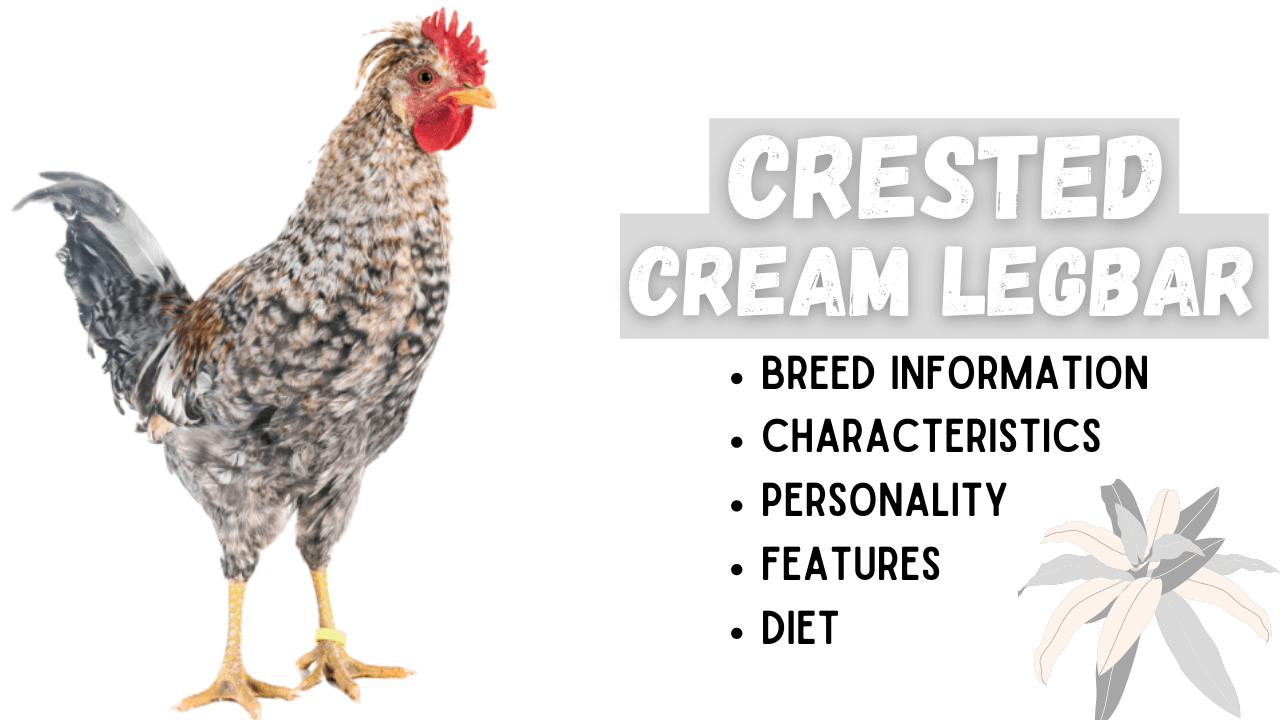About Crested Cream Legbar
The Crested Cream Legbar is a popular chicken breed primarily because of its blue eggs. It is one of those breeds that was produced after decades-long studies and researches. In this article, we will discuss all the important things that you need to know about Crested Cream Legbars including their history and origin, egg laying capabilities, appearance, size and color, temperament, and how you could properly take care of them.
History and Origin
Before the year 1931, the Crested Cream Legbar breed was inexistent (source). The breed was developed by two professors: Michael Pease and R.C. Punnett from Cambridge, England. The latter person is probably one you already have heard of because he was the creator of the Punnett Square, a tool used by geneticists to determine genotype offspring.
Punnett was the leader of the Breeding Program at the Genetic Institute at Cambridge University. He initially worked on producing chicken breeds that would auto-sex, or those that people can easily recognize as males or females. In 1930, Clarence Elliott, a world-renowned horticulturalist gave Punnett Araucana chickens from South America. These chickens are known for laying blue colored eggs.
Punnett was already retired and he made Michael Pease take over his work. But he continued working at home. He crossed Araucana chickens with the gold penciled Hamburg. He continued making different cross breeds until he made a cream-colored chicken. Punnett considered this a breakthrough in his work because he hasn’t seen a cream-colored chicken that time. On the other hand, Pease worked on a separate project, to which he was also able to produce a breed with a cream color. Pease and Punnett decided to cross these two chickens to make the Crested Cream Legbar. They initially showcased this breed in 1947 at the London Dairy Show.
However, it wasn’t until 1970 when people demanded these chickens. It was the time when blue eggs became popular.
Appearance
A crested cream legbar has one red-colored comb that has six points. Its earlobes are colored white or cream. Its eyes are reddish bay in color while its beak can be colored either horn or yellow. The beak slightly curves downwards. True to its name, a crested cream legbar has a crest atop its head regardless of sex. But the crest does not fall downwards to obstruct the chicken’s vision.
The chicken also has a full breast that runs upwards to a long neck. Its shoulders are moderately broad and leads to flat slightly sloped back. The males hold their tails at 45 degrees, the hens hold theirs as well but less than 45 degrees. They both hold their wings close to their body.
Crested Cream Legbars have clean, yellow-colored legs with four toes. Their skin is also colored yellow. They have an upright carriage.
Size and Color
In general, Crested Cream Legbars are considered light fowls. The roosters weigh about seven and a half pounds while the females weigh six pounds. They have a triangular shaped body and a long, flat back.
Crested Cream Legbars, obviously, are colored cream and gray. Males have noticeable barring on their breast and tail while females have more subtle barring that are colored salmon from their breast and neck.
Egg Laying
Crested Cream Legbars are not just pretty chickens that could make for ornamental birds. They are also very productive when it comes to laying eggs. They can give, on the average, four blue colored eggs every week. Encourage egg production through one of these best chicken nesting pads. When it comes to broodiness, opinions are quite mixed. Some people claim that Crested Cream Legbars are broody while some say that they are not.
However, these chickens are autosexing. This means that after hatching from eggs, one could easily distinguish a female Crested Cream Legbar from a male. The females have more noticeable stripes than males.
Temperament
When it comes to temperament, there seems to be some disagreeing opinions. Some people say that these birds are noisy, nervous, and flighty while others say that they are friendly, docile, and can be easily handled.
This mix of opinions seems to root from the two distinct strains of Crested Cream Legbars. One strain seems to stick more to the original standards for this breed, leaning towards functioning as production chickens.
But in general, Crested Cream Legbars are very friendly, sociable, and can be easily handled. They, however, like foraging and free ranging which is why they don’t really tolerate confinement that much well. This breed of chicken excels in foraging. They are also predator savvy because of how watchful and alert they are. During mating and breeding season, roster can be quite aggressive.
Should I Get a Crested Cream Legbar?
If you want to own a Crested Cream Legbar, you should take into account the important fact that this chicken breed enjoys free ranging very much. And because of this, they don’t tolerate confinement very well. If you always keep this chicken in your coop, it can get difficult to handle and flighty at most times.
Adding them into a mixed flock, aggressive birds can tend to pick on them. Hence, try to combine them with non-aggressive breeds.
However, in general, Crested Cream Legbars are low maintenance. They don’t require any kind of special care. Hence, they really work with beginner chicken breeders and caretakers.
One other thing that can get you attracted with this breed is the beautiful light blue eggs that they lay.
Conclusion
Overall, the Crested Cream Legbar is an outstanding chicken breed, which is why it is considered to be one of the top 20 chicken breeds. You have been given the most important things that you need to know about Crested Cream Legbars – including how the breed originated, its appearance, temperament, size and color, and egg laying capabilities. The choice is up to you now to decide whether to get one for you coop or backyard. Whatever your decision may be, we wish you good luck in your chicken breeding journey!




